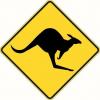I have always sharpened using Shapton pros 1000, 5000 and 8000. I was wondering if anyone can tell me where and how they notice a difference when going up to the 12K or 13K Shaptons or Sigmas. Is it longevity of the edge, ability to "catch" the shaving, (hard to describe what I mean here but you can feel when an edge is very sharp, almost like it wants to engage the wood). How do you perceive any difference when going to the high grits. Just trying to educate myself here.




 Reply With Quote
Reply With Quote
 You high grit users please don't take this as a challenge to your methods... I truly want to learn.
You high grit users please don't take this as a challenge to your methods... I truly want to learn.




